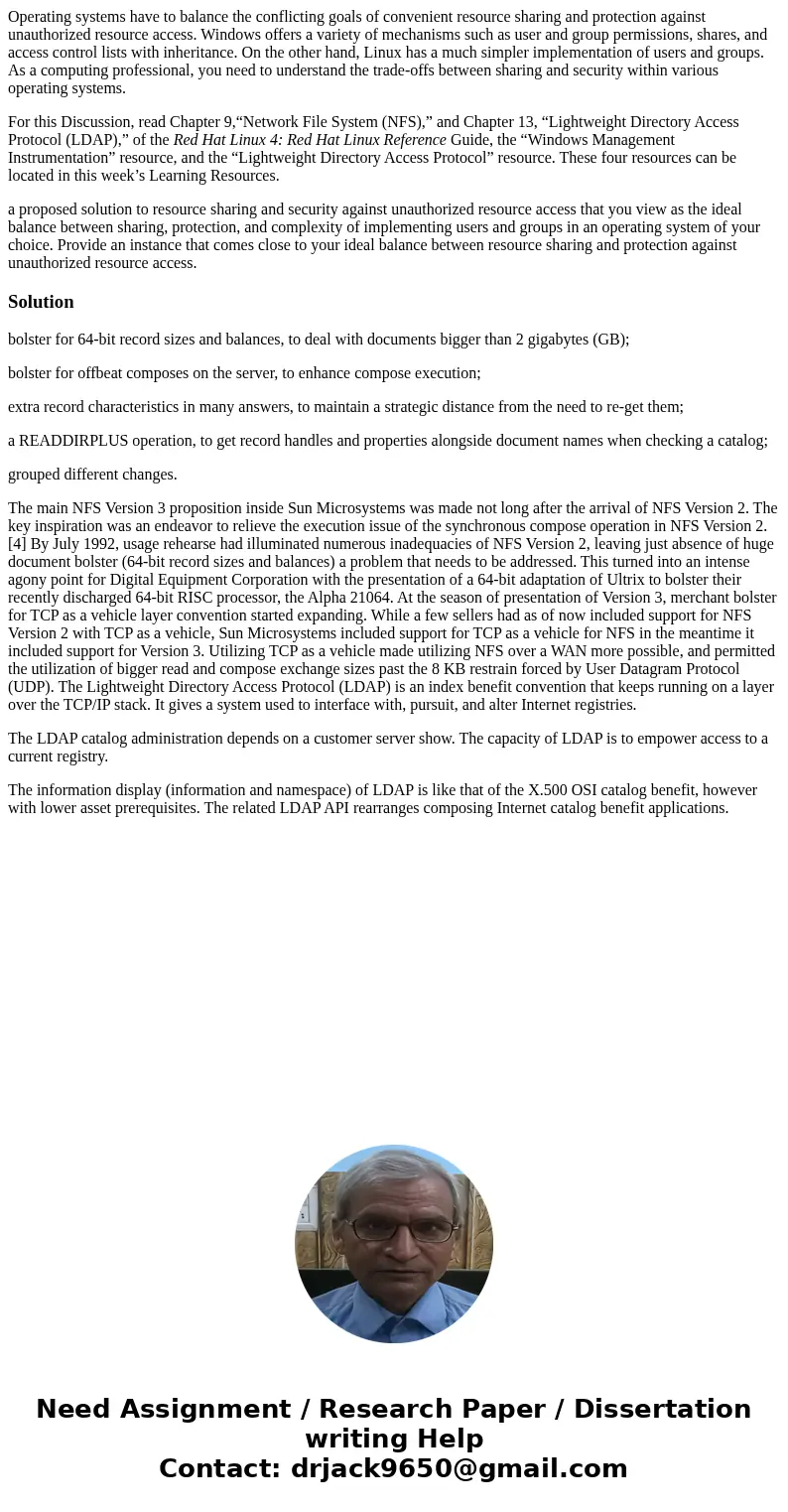Operating systems have to balance the conflicting goals of c
Operating systems have to balance the conflicting goals of convenient resource sharing and protection against unauthorized resource access. Windows offers a variety of mechanisms such as user and group permissions, shares, and access control lists with inheritance. On the other hand, Linux has a much simpler implementation of users and groups. As a computing professional, you need to understand the trade-offs between sharing and security within various operating systems.
For this Discussion, read Chapter 9,“Network File System (NFS),” and Chapter 13, “Lightweight Directory Access Protocol (LDAP),” of the Red Hat Linux 4: Red Hat Linux Reference Guide, the “Windows Management Instrumentation” resource, and the “Lightweight Directory Access Protocol” resource. These four resources can be located in this week’s Learning Resources.
a proposed solution to resource sharing and security against unauthorized resource access that you view as the ideal balance between sharing, protection, and complexity of implementing users and groups in an operating system of your choice. Provide an instance that comes close to your ideal balance between resource sharing and protection against unauthorized resource access.
Solution
bolster for 64-bit record sizes and balances, to deal with documents bigger than 2 gigabytes (GB);
bolster for offbeat composes on the server, to enhance compose execution;
extra record characteristics in many answers, to maintain a strategic distance from the need to re-get them;
a READDIRPLUS operation, to get record handles and properties alongside document names when checking a catalog;
grouped different changes.
The main NFS Version 3 proposition inside Sun Microsystems was made not long after the arrival of NFS Version 2. The key inspiration was an endeavor to relieve the execution issue of the synchronous compose operation in NFS Version 2.[4] By July 1992, usage rehearse had illuminated numerous inadequacies of NFS Version 2, leaving just absence of huge document bolster (64-bit record sizes and balances) a problem that needs to be addressed. This turned into an intense agony point for Digital Equipment Corporation with the presentation of a 64-bit adaptation of Ultrix to bolster their recently discharged 64-bit RISC processor, the Alpha 21064. At the season of presentation of Version 3, merchant bolster for TCP as a vehicle layer convention started expanding. While a few sellers had as of now included support for NFS Version 2 with TCP as a vehicle, Sun Microsystems included support for TCP as a vehicle for NFS in the meantime it included support for Version 3. Utilizing TCP as a vehicle made utilizing NFS over a WAN more possible, and permitted the utilization of bigger read and compose exchange sizes past the 8 KB restrain forced by User Datagram Protocol (UDP). The Lightweight Directory Access Protocol (LDAP) is an index benefit convention that keeps running on a layer over the TCP/IP stack. It gives a system used to interface with, pursuit, and alter Internet registries.
The LDAP catalog administration depends on a customer server show. The capacity of LDAP is to empower access to a current registry.
The information display (information and namespace) of LDAP is like that of the X.500 OSI catalog benefit, however with lower asset prerequisites. The related LDAP API rearranges composing Internet catalog benefit applications.

 Homework Sourse
Homework Sourse